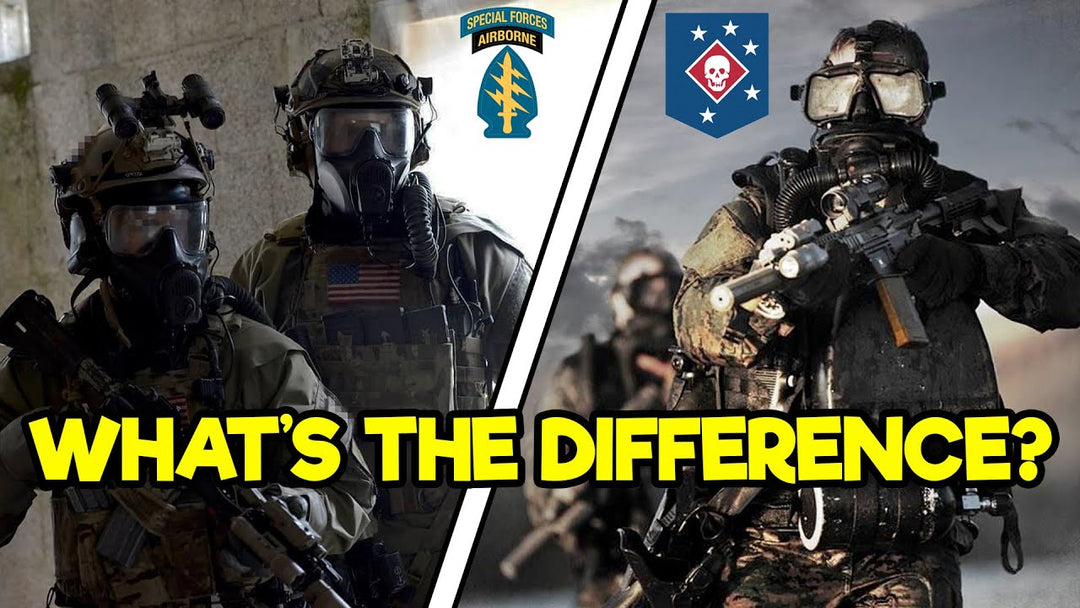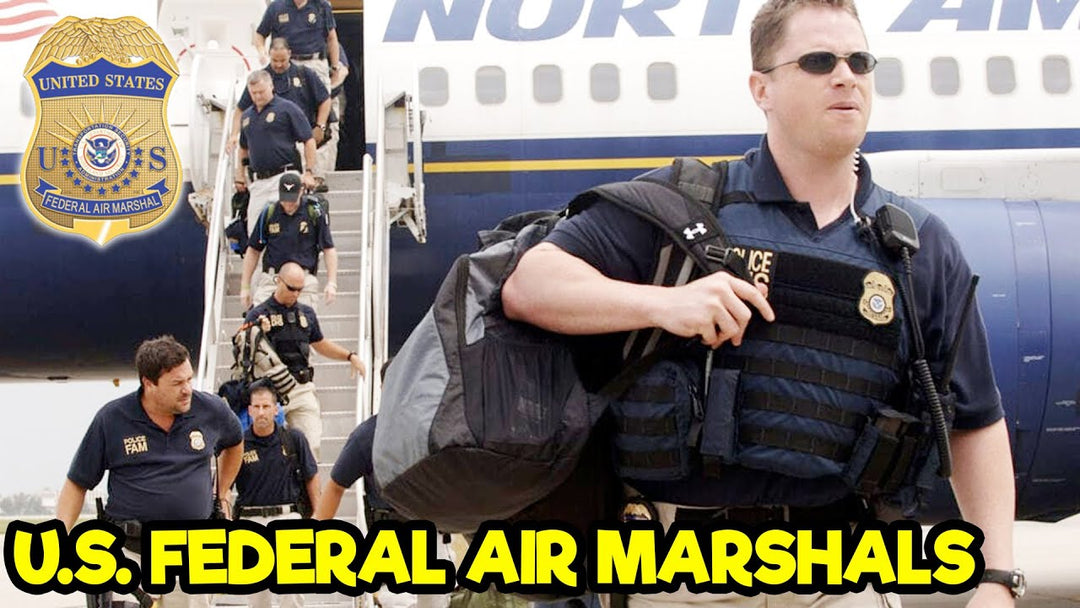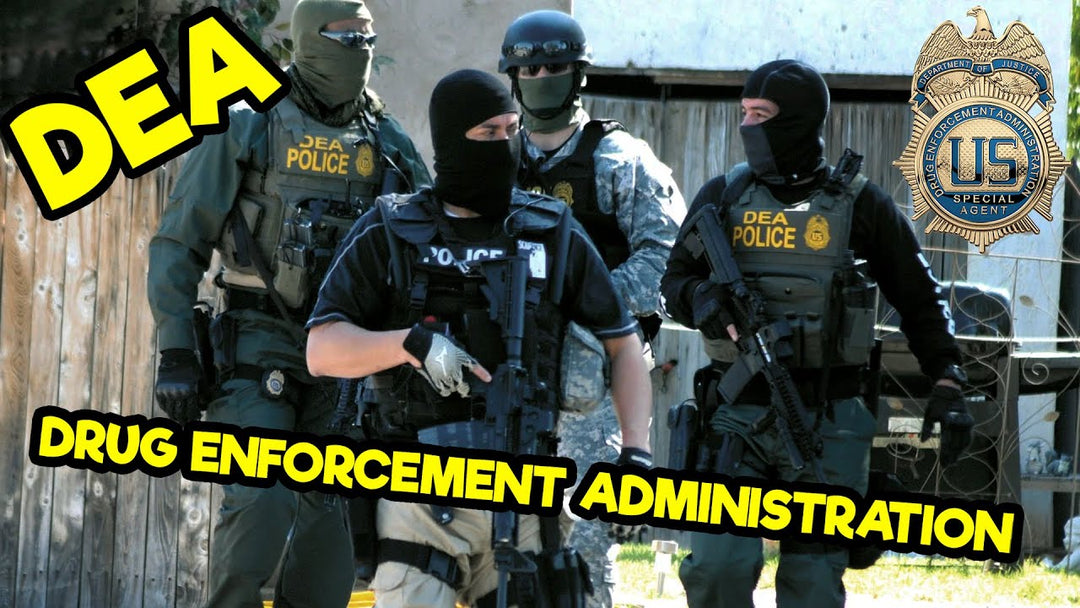The Story Behind the FBI Hostage Rescue Team (HRT)

On September 5, 1972, an attack began that would send shockwaves throughout the world. Eight armed insurgents would take 11 Israelis hostage during the 1972 Olympics. After a 20 hour standoff with the world watching helplessly, things would take a tragic turn that would result in the death of all hostages. This event, known infamously as the Munich Massacre, had lasting repercussions on an international scale, waking up Western governments to the global threat of terrorism.
Nearly 12 years later with the 1984 Los Angeles Olympics approaching, the FBI would be tasked with creating an elite unit designed to make sure an event like this never happened again…
TABLE OF CONTENTS
FBI HOSTAGE RESCUE TEAM (HRT): HOW AND WHY IT WAS FORMED?
FBI HOSTAGE RESCUE TEAM (HRT): OPERATIONAL HISTORY AND CHALLENGES
FBI HOSTAGE RESCUE TEAM (HRT): PRESENT DAY
FBI HOSTAGE RESCUE TEAM (HRT): SELECTION AND TRAINING
FBI HOSTAGE RESCUE TEAM (HRT): CONCLUSION
FBI HOSTAGE RESCUE TEAM (HRT): HOW AND WHY IT WAS FORMED?

In 1973, one short year later after the Munich Massacre, a tragic incident would unfold on U.S. soil. Hundreds of Native American activists seized the South Dakota town of Wounded Knee, kicking off a monthslong occupation and standoff between them and the United States Government. The aftermath of this deadly and tolling incident would inspire the FBI to establish SWAT teams throughout the country to be better prepared for high stakes incidents.
However, these SWAT teams wouldn’t be enough for the threats that were facing the nation. While the FBI put in a considerable amount of time, funding, and resources into establishing SWAT teams throughout its field offices in the country, they needed to take their capabilities to the next level.
In the late 1970’s, the FBI began developing the concept for a “Super SWAT Team”. The idea behind this Super SWAT Team was that it would be capable of handling extraordinary hostage situations, large scale counter-terrorist operations, situations involving nuclear or biological agents, and operations where local law enforcement or the regional FBI field office was not trained or equipped to handle. This very concept is what led to the establishment of the FBI’s highly elite Hostage Rescue Team.
Fast forward a few years later, with the 1984 Los Angeles Olympics approaching, and the FBI would give the official greenlight to stand up the Hostage Rescue Team in 1982. Roughly 90 applicants, consisting of the FBI’s best special agents, would apply to join - but only half of them would make it through the initial selection process. Of the half that made it through, the FBI would need to provide them with world class training in order to forge a team of highly efficient operators.
To do this, they would be sent to train with some of the U.S. Special Operation’s finest. From receiving counterterrorism instruction from Delta Force, combatant diving lessons from the Navy SEALs, air operations from the 160th SOAR, and small unit tactics from the Marine Corps, the newly minted HRT operators were quickly becoming one of the fiercest units law enforcement had ever seen.
And as if that wasn’t enough, the Hostage Rescue Team would also begin to build connections with similar units from around the world, participating in exchange programs and joint training with the Special Air Service, French GIGN, Germany’s GSG-9, and SEAL Team Six.
Things kept trucking along, and it got to the point where the HRT had one final certification exercise before they’d get the nod to become fully operational. This exercise was codenamed Operation Equus Red, where the HRT was paired with a local SWAT team and the Department of Energy’s Nuclear Energy Search Team to assault a simulated terrorist stronghold. It took only 30 seconds for HRT operators to neutralize the situation once they confirmed the location of the stronghold. FBI senior leadership thought the exercise was a complete success and granted HRT the final approval it needed to go fully operational.
After going through a series of joint training exercises with the LAPD SWAT team, the FBI HRT was ready for its first real world application during the 1984 Los Angeles Olympics. The Olympics went off without a hitch and the first mission of the Hostage Rescue Team was a success.
But their work had only just begun…
FBI HOSTAGE RESCUE TEAM (HRT): OPERATIONAL HISTORY AND CHALLENGES

Throughout the years, the Hostage Rescue Team would participate in several crucial missions both domestic and abroad, which helped develop their purpose, skill sets, and overall mission.
In 1985, the HRT would surveil and assault a militia compound, eventually convincing the rest of the combatants to stand down through negotiations. Later that year, members of their team flew to Puerto Rico to apprehend suspects who had fled to the island after robbing Wells Fargo for $7 million. This year, they would also receive permission from the DOJ to begin conducting international counter-terrorist operations in support of U.S. national interests. This marked the beginning of overseas operations for the Hostage Rescue Team.
1986 was the year the Hostage Rescue team would receive its first casualty. Special Agent James Mcallister, an original member of the team, was killed during a helicopter rappelling exercise in Quantico. Moving on to 1987, the team was involved in two significant missions, but this time they were operating in foreign countries - Frankfurt, Germany, and Beirut, Lebanon. These missions were particularly important because they allowed the Hostage Rescue team to use their new international arrest powers. Further into the late 80’s and early 90’s, they would find themselves in a slew of high stakes missions and scenarios that really put them to the test. From dealing with prisoner riots and unrest, intense manhunts and responding to the 1992 Los Angeles Riots, they had their work cut out for them.
As a common struggle of federal law enforcement, the Hostage Rescue Team faced some challenges when it came to public perception. They were involved in two well-known incidents, Ruby Ridge and Waco, which brought negative attention to their actions for quite some time. These incidents were heavily criticized, and the HRT faced intense pressure from both the government and the general public.
This ultimately led to a restructure and refocusing of the unit. Congress granted permission for the team to double in size, and mandated closer coordination with the FBI’s hostage negotiators and crisis management personnel. These actions eventually led to the formation of the Critical Incident Response Group, which is a conglomerate of units that allow the FBI to respond to special crisis incidents.
However, despite the backlash, the Hostage Rescue Team didn't back down. In later years, they played a significant role in dealing with the Unabomber case. They were crucial in monitoring and gathering intelligence on the Unabomber's activities. Eventually, their efforts led to his arrest, and they played an essential part in bringing him to justice.
Then, throughout the late 90’s the HRT would continue to conduct various overseas missions and provide security details and emergency responses to domestic incidents. But things would take a turn after the September 11th attacks, which would mark a change in how HRT was leveraged. 9/11 would forever change the way the U.S. government, and the HRT in particular, dealt with terrorism. The FBI HRT would ramp up its overseas deployments in 2002, where teams of operators would be sent to Iraq and Afghanistan in 90 day intervals. They would provide security for other FBI personnel and conduct joint operations with elements of U.S. Special Operations Command and the intelligence community. Members were known to have deployed over half a dozen times during this time period.
2013 would be a particularly busy year for the HRT. They would participate in a number of high profile operations and would unfortunately experience the tragic loss of two more of its personnel during a training exercise. After providing security for the 2013 presidential inauguration, the HRT would neutralize two intense hostage scenarios in rural Alabama and upstate New York. They would also have their hand in pursuing the Boston Bombers, as well as aiding in the capture of wanted terror suspects in Somalia and Libya. To top that all off, they also dealt with the successful rescue of a 16 year old girl who was kidnapped.
But the stories we’ve covered thus far are just scratching the surface.
FBI HOSTAGE RESCUE TEAM (HRT): PRESENT DAY

Present day, the FBI Hostage Rescue team is one of the United States law enforcement’s premier tactical units. They are the go-to choice for domestic counterterrorism and hostage rescue.
FBI HRT currently operates at roughly a 100 man capacity, and is provided with specialized equipment, vehicles, and platforms to support their missions. They’re armed with various state of the art submachine guns, pistols, sniper rifles, and assault rifles, and frequently wear Multicam military style tactical uniforms during their operations. If they’re not wearing a gigantic FBI patch on their uniform, you might mistake one of them for being a member of Delta Force or SEAL Team 6.
In addition to their weapons, they’re also provided with helicopters, boats, and any other gadgets needed to accomplish the mission at hand. The FBI makes sure the HRT has the best tools at their disposal, and the amount of funding that is given to these guys is insane.
As a whole, the FBI HRT is divided into two teams: Gold and Blue, which contain assault and sniper teams. They’re structured this way because their operators also fall into one of two groups, which are either assaulters or snipers and observers. These teams train for a range of contingencies, including rescuing hostages, counterterrorism, executing warrants on high-threat suspects, and aircraft and ship hijackings.
FBI HOSTAGE RESCUE TEAM (HRT): SELECTION AND TRAINING

In order to continuously be at their best, they have to put in a considerable amount of time honing their skills. The HRT is in a constant cycle of training, readiness, and deployment. Hostage rescue situations can pop up at a moment’s notice, so the HRT needs to be ready for the most difficult situations at any place, at any time. They have the ability to deploy within four hours to any location within the United States or its territories.
During a routine week of training, it is not unusual for HRT operators to fire thousands of rounds of ammunition to keep their shooting skills on point. Additionally, days will be set aside for members to develop individual skills such as mountaineering, urban climbing, maritime operations, airborne ops, and even going to combatant dive school. These training opportunities are the same as those given to special operations communities.
To this day, their selection process still weeds out even the most qualified of candidates. FBI Special Agents must serve in the FBI for at least 2-3 years before they can try out, and even those with extensive special operations backgrounds wind up not making the cut.
FBI HOSTAGE RESCUE TEAM (HRT): CONCLUSION

The FBI Hostage Rescue Team has been involved in over 900 successful missions, both foreign and domestic. While many of these missions receive little to no attention from the media, it doesn’t discount the major impact this elite team has on the world stage.
If you want to learn more about the military, law enforcement, or government entities, we have a YouTube channel dedicated to providing the best info out there, plus we have a growing list of blog posts as well. Click the links to take you to them!
General Discharge is a veteran-owned, veteran-operated organization that is dedicated to providing the best U.S. Military and Law Enforcement information. With over 250 YouTube videos, over 45 million views, and hundreds of thousands of followers, we have contributed to the success and knowledge of both the current and future generations of service members.






Leave a comment